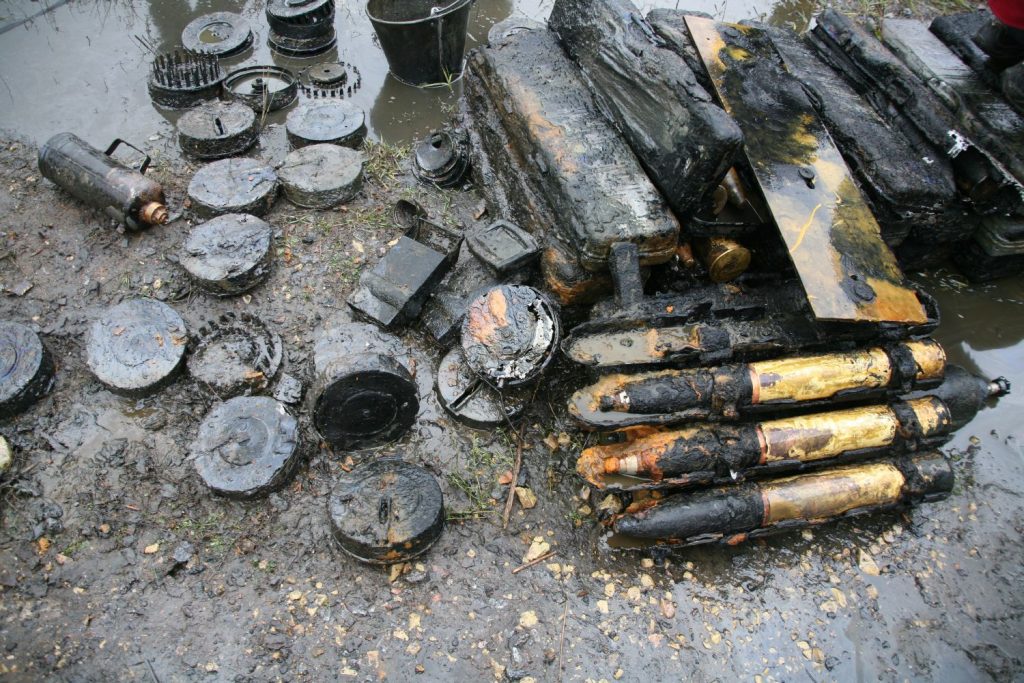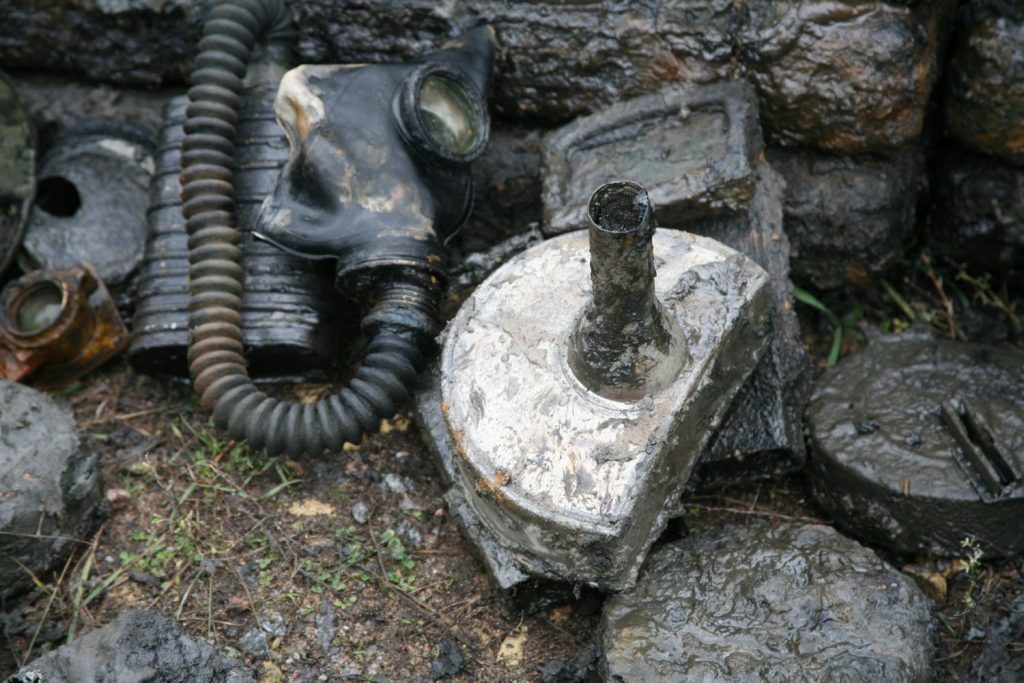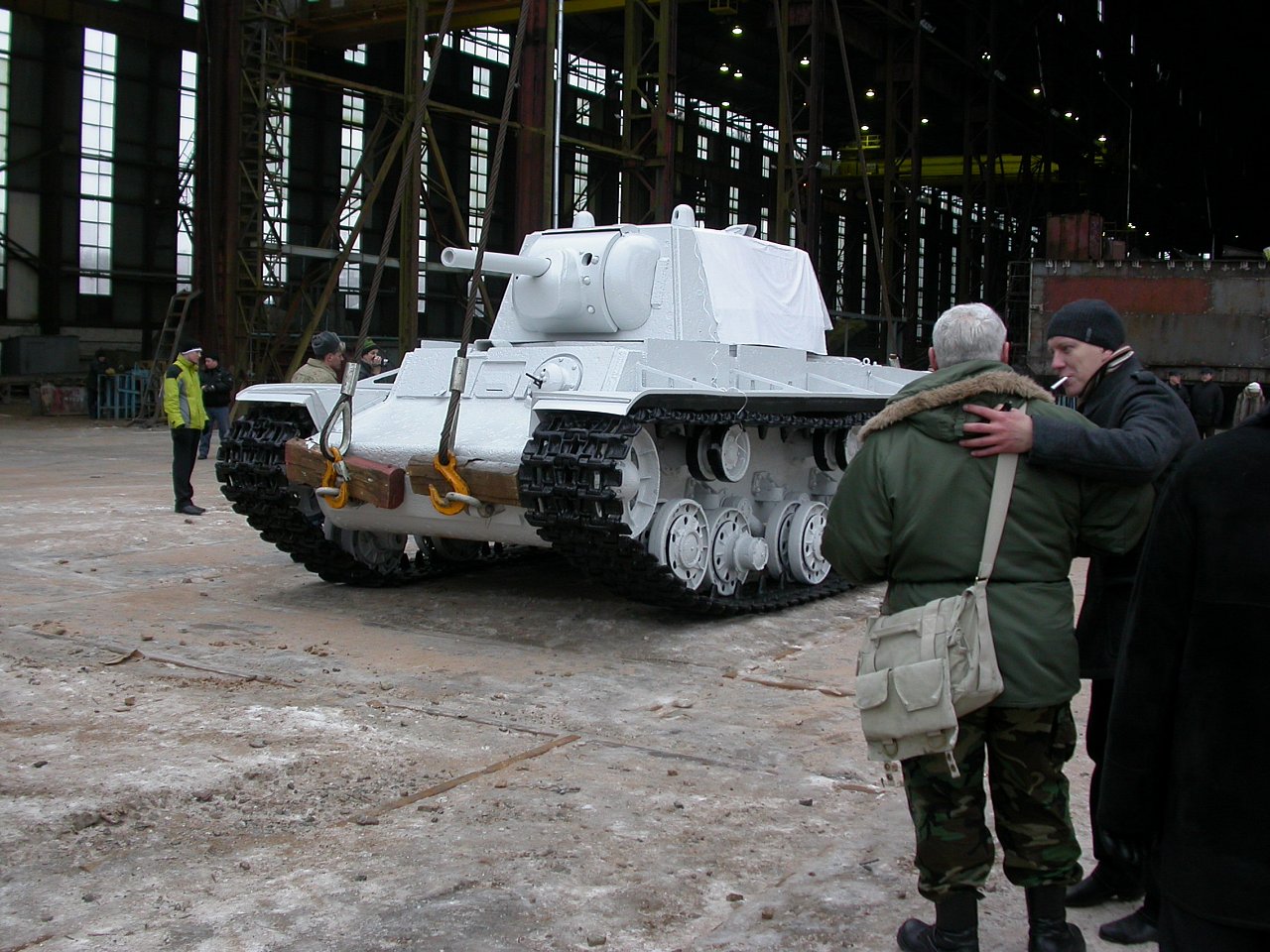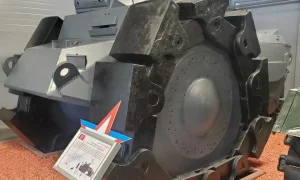Kv1 Tank “Ghost”- Raised from The depth of the Niva River
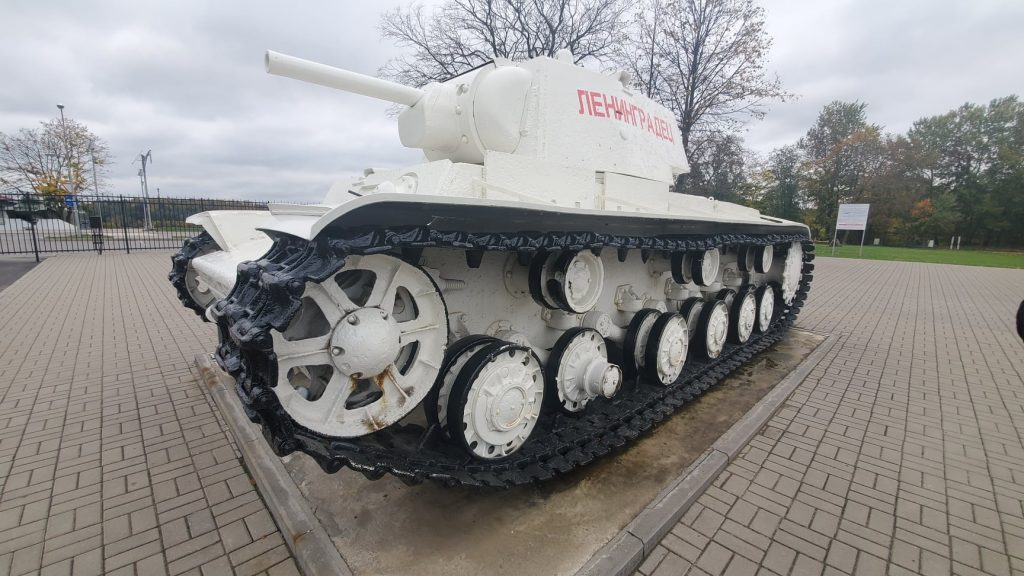
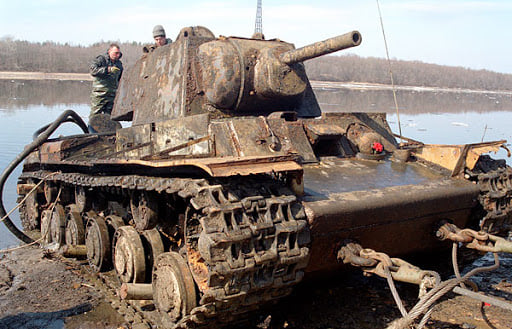 This specific KV1 with it’s road wheel missing was raised from the Niva river after it was sunk through the ice with artillery fire, while on it’s way to the far bank for repairs in Operation Spark (Iskra). This was during operation spark and the operation to break through the encirclement of the city of Leningrad During January 1943. It along with several other tanks can be seen at the museum of “Breakthrough” near modern day St.Petersburg. The tank was raised in 2003.
This specific KV1 with it’s road wheel missing was raised from the Niva river after it was sunk through the ice with artillery fire, while on it’s way to the far bank for repairs in Operation Spark (Iskra). This was during operation spark and the operation to break through the encirclement of the city of Leningrad During January 1943. It along with several other tanks can be seen at the museum of “Breakthrough” near modern day St.Petersburg. The tank was raised in 2003.
In the Leningrad region, the famous KV tank was raised from the bottom of the river – one of those that in 1941 participated in fierce battles on the Nevsky Piglet. They discovered him back in the spring, but it took several months to prepare the most complicated operation. The combat vehicle, which the Nazis feared like fire, is now waiting for restoration.
In 2003 the divers had to descend into the dark icy Neva several times in order to secure metal cables under the tank hull, with the help of which the combat vehicle would be lifted up.
“There are many difficulties here. Firstly, the wind suddenly broke out from the right bank. Secondly, a very strong and unpleasant current,” says Andrey Shpigel, head of the tank recovery operation.
The depth of the channel in this place is 15 meters. Shipping fairway.
In the autumn of 1941, one of the most brutal battles of the Great Patriotic War unfolded for a piece of land, nicknamed the Nevsky Piglet. Weapons, including tanks, were transported on rafts from one side of the river to the other. The raft on which the KV found by the search engines was located was destroyed, apparently, barely moving away from the shore.
To raise the sunken car, a floating crane had to be called from Kaliningrad. It was impossible to pull ashore in tow. They tried to do this back in June, when the tank was first discovered.
“The tank, covered with sand, turned upside down with caterpillars,” says search and rescue officer Valentin Rybakov. “It’s hard to see anything underwater there.”
The first climb attempt was unsuccessful. The cables were too tight. Only eight hours later, one caterpillar appeared on the surface of the water. The tank rolled over while lifting on its side, and in order to put it straight, it was necessary to tow it to the nearest shoal and only then to the shore. The sappers were the first to be let into the corpus. Mines and shells inside and decades later can be dangerous.
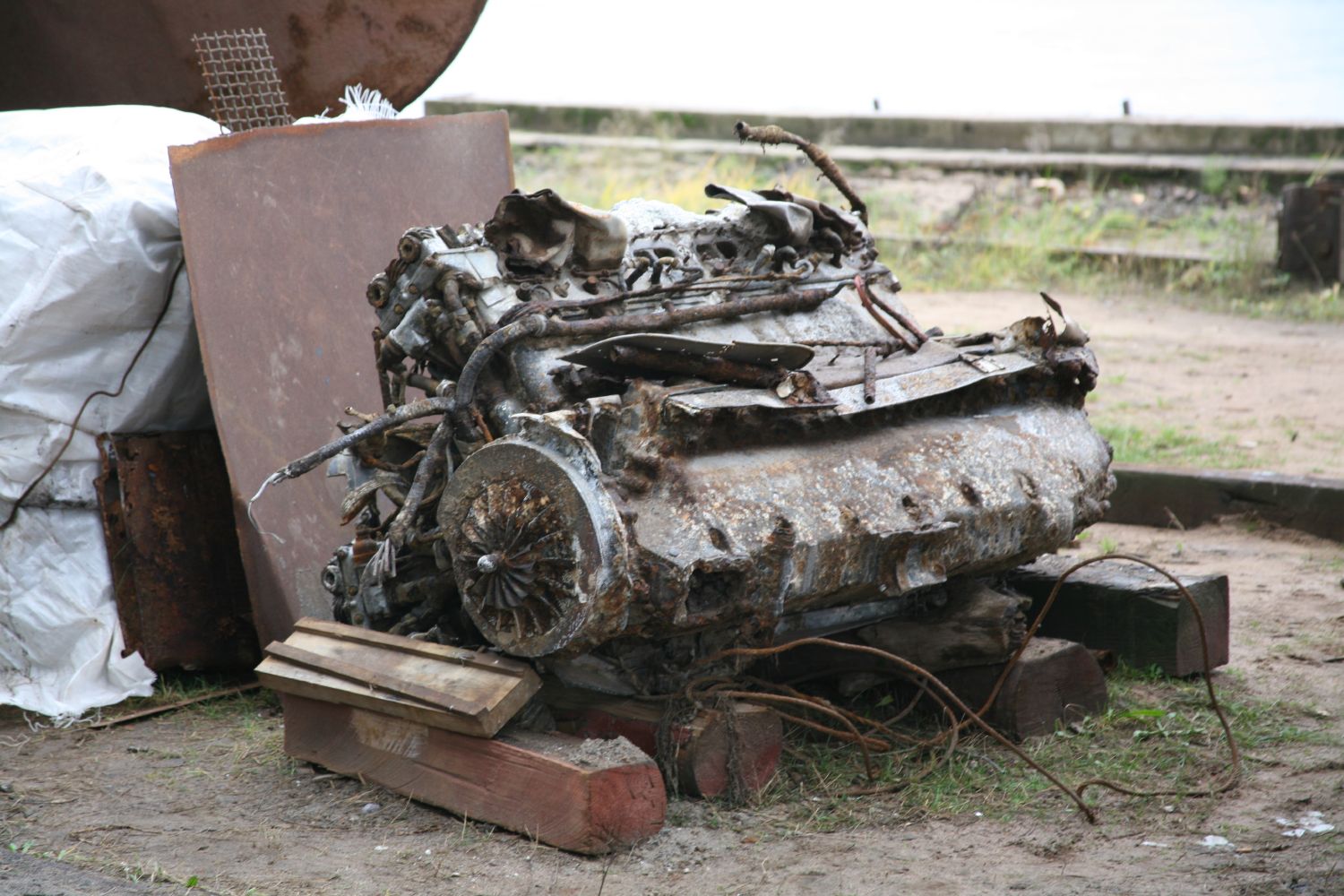
Raising KV1 Ghost Tank – The Engine
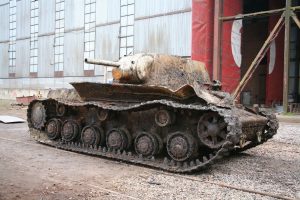
Raising KV1 Ghost Tank – The Remains
For 70 years under water, the armor was covered with sand and silt. The metal is rusted, the engine is destroyed, there is no gun. Experts say that it will be incredibly difficult to find out the entire history of this combat vehicle and its crew. And yet, the restorers are sure: they will clean the hull, fix the engine, replace the gun.
“It was built at the Kirov Plant. Its children built it, and therefore this memory must be passed on to the younger generation. And when they see how it starts, how it drives, and we will also give them the opportunity to sit down and touch it. It cannot be expressed in words,” – says the director of the Museum of the Battle for Leningrad Oleg Titberia.
Picture Gallery Kv1 Tank
